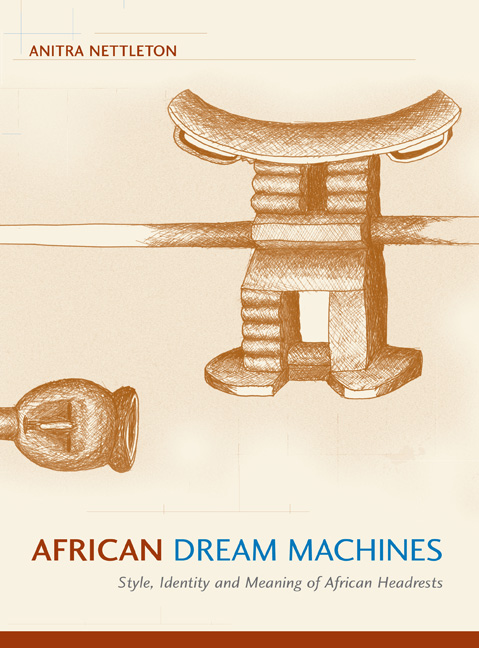Book contents
- Frontmatter
- Contents
- Preface
- Acknowledgements
- Notes on the Use of African Ethnic Names and Country and Place Names
- References to Illustrations in the Text and Notes on Illustrations
- Chapter 1 Headrests and Art
- Chapter 2 A Matter of Style, or, Why Style Matters
- Chapter 3 Methodology, Position and Limitations
- Chapter 4 The Geographical and Chronological Distribution of the Columned Headrest
- Chapter 5 Authenticity and History
- Chapter 6 East African Headrests: Identity, Form and Aesthetics
- Chapter 7 Tracing Histories: Central and Southern African Connections
- Chapter 8 Not Just a Curious Beauty: The Anatomy of Meaning in Useful Objects
- Notes to Chapters
- Bibliography
- List of Illustrations
- Index
Chapter 4 - The Geographical and Chronological Distribution of the Columned Headrest
Published online by Cambridge University Press: 18 May 2019
- Frontmatter
- Contents
- Preface
- Acknowledgements
- Notes on the Use of African Ethnic Names and Country and Place Names
- References to Illustrations in the Text and Notes on Illustrations
- Chapter 1 Headrests and Art
- Chapter 2 A Matter of Style, or, Why Style Matters
- Chapter 3 Methodology, Position and Limitations
- Chapter 4 The Geographical and Chronological Distribution of the Columned Headrest
- Chapter 5 Authenticity and History
- Chapter 6 East African Headrests: Identity, Form and Aesthetics
- Chapter 7 Tracing Histories: Central and Southern African Connections
- Chapter 8 Not Just a Curious Beauty: The Anatomy of Meaning in Useful Objects
- Notes to Chapters
- Bibliography
- List of Illustrations
- Index
Summary
THIS CHAPTER SETS out to examine the distribution of a single headrest type, the columned headrest, but does not follow set geographical imperatives, even though it uses a progression from north to south similar to that used in many studies of art from the African continent. The typology outlined here is based on the analysis of formal elements in particular objects, and it traces the occurrence of similar individual features and combinations of constituent elements in the headrests made and used among ethnic groupings widely dispersed across the continent.
The distribution of the columned headrest across Africa could be approached from two angles. On the one hand, it would be an attempt to trace a continuous master narrative of the diffusion of this headrest type across African from an originary point — a genealogical line punctuated by entries and exits of the kind posited by Kubler (1985). It is, however, doubtful that a clear linear historical development could ever be traced for all African columned headrests. A logical place to seek origins for African headrest types would appear to be in the forms used in Ancient Egypt, where some columned headrests, especially those made of alabaster (figs. 3 & 27), were fluted, following the classical format of temple architecture. These are quite different from those other, mostly wooden,Ancient Egyptian headrests (figs. 28 & 29) that appear to belong to the same type as some nineteenth and twentieth century Sudanese examples (figs. 208 & 209) and some of the Tellem examples discussed in the previous chapter (figs. 4, 6 & 9). But while this observation may be made on a formal level, it cannot be accepted at face value without implying the direct descent from Ancient Egypt claimed for later African forms by Theodore Bent discussed in chapter 2, because there is no way of tracing such a simple genealogy. Although some headrests have been recorded from archaeological contexts, such as those found at Sanga in the Congo (now the Democratic Republic of the Congo or DRC) by William Burton (University of the Witwatersrand Art Galleries 1992), there are insufficient instances to allow for such a reconstruction across two millennia.
- Type
- Chapter
- Information
- African Dream MachinesStyle, Identity and Meaning of African Headrests, pp. 69 - 130Publisher: Wits University PressPrint publication year: 2007



